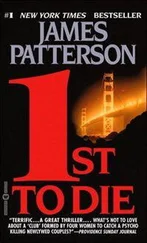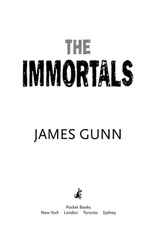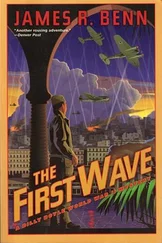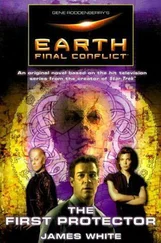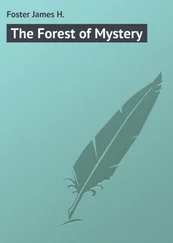Living a dream he dared not avow even in childhood, the realization of a lifelong fantasy, fifty-three-year-old Gary Franklin Smith observed his handiwork from the raised podium on the south lawn of the White House. He felt surprisingly little of the discomfort he’d expected to ensue from this sacrifice of his privacy to universal fame. All he felt now was a sense of duty, redefined self-esteem, and a barely perceptible tinge of unworthiness.
Plenty of artists were more talented than he was, he decided, but none had ever worked harder at improving their skills, day after goddamn day. He deserved this!
Can you hear me, Father?
On either side of him, along with their families, sat William Jefferson Clinton and Albert A. Gore Jr., the smiling incumbent President and somber President-elect of the United States of America. The former had lost himself in the pomp of the night’s extravaganza, triumphant in the survival of his presidency over these past eight years and the satisfaction of having chosen his successor. The latter, about to confront his own lifelong dream/nightmare, could barely keep his mind in the present.
Over two billion persons throughout the world were staring at television, computer, or motion picture screens as, one by one, like hard-wired supernovae, the digitally manipulated, diode-enhanced fireworks discharged their welcome of the third millennium into these starlit skies above Pennsylvania Avenue. Then for one solid hour, as if by alchemy, each starburst unfolded into an intricate panorama of a notable American painting, instantly recognizable in crude but elegant likeness, through Gary’s meticulous design.
K-K-K-K-K-K-KRAK! Grant Wood’s American Gothic.
K-K-K-K-K-K-KRAK! Norman Rockwell’s Freedom of Speech.
K-K-K-K-K-K-KRAK! Thomas Moran’s The Mist in the Canyon.
K-K-K-K-K-K-KRAK! Gary Franklin Smith’s Founding Fathers.
K-K-K-K-K-K-KRAK! Maxfield Parrish’s Daybreak.
K-K-K-K-K-K-KRAK! Frederick Edwin Church’s Niagara Falls.
K-K-K-K-K-K-KRAK! Mary Cassatt’s The Coiffure.
K-K-K-K-K-K-KRAK! Gary Franklin Smith’s Yosemite.
K-K-K-K-K-K-KRAK! Andy Warhol’s Marilyn Monroe.
K-K-K-K-K-K-KRAK! James Abbot McNeill Whistler’s The Artist’s Mother.
K-K-K-K-K-K-KRAK! Thomas Eakins’s The Gross Clinic.
From time to time the cameras focused on Gary’s calm, reserved face. His notoriety as an advocate of the embattled science the public was learning to call “immortalism” now equaled the fame he’d won as an artist.
Tonight’s celebration had sprung from the efforts of America’s brightest scientific minds, an act of Congress, $960 million in corporate sponsorship, and an undisclosed expenditure of taxpayer funds from the budget of the Pentagon, which now owned the technology.
Last February when Vice President Gore asked him to design the display, Gary had harbored certain reservations as he pondered his own three family members lying in cold storage, frozen under conditions of sheer guesswork: What if the freezing had erased their memories and identities? Someday, when and if they were revived, they might be like amnesiacs; healthy infants in adult bodies, needing to be taught everything. Even after they’d absorbed the knowledge they’d need; even if their personalities developed the same traits they’d borne in the twentieth century; and even if they seemed to be just like they were… Without their original memories, they wouldn’t be. They’d be more like clones of the dead—perhaps as valuable to the world as the originals, but with lives both unknown and worthless to their original selves.
“Mr. Vice President,” he’d said, “that money would be better spent on medical research.”
Gore had obviously been prepared. “You could’ve said the same about sending men to the moon in 1969,” he’d answered. “We did it for almost the same reasons: because we knew we could, because the public wanted it, to show the world it could be done, and most of all, because the world needed the inspiration. Logically it may not have been the best use of funds. But national pride is hardly logical, my friend. We have the technology now, and the American public wants us to display it; to strut our stuff. Besides, a Millennial Celebration only comes around every ten centuries. Gary, you’re everyone’s first choice, but if you don’t want the job, there must be about a million artists who do.”
Gore had neglected to mention the “distraction value” of the moon landing—and of the Millennial Celebration. What Neil Armstrong was to America’s Vietnam War in 1969, Gary Franklin Smith would become to turn-of-the-millennium America’s divisive War Against Violent Crime: a temporary, heroic distraction.
Which raised the matter of the double-sided knife of fame.
For a decade Gary had regarded his growing celebrity as an unwelcome interloper, a parasite on the capillaries of his time, his most valuable asset. Then, like an artificial strain of bacteria, fame became an ally. Suddenly fame could be used to prolong life; to expand the very boundaries of time, not only for self or kin, but for humankind.
Art historian and critic Robert Hughes had been the first to dub him “the Magic Johnson of cryonics,” an epithet that captured the spirit of his courageous coming-out. Gary Franklin Smith, former physician turned world-renowned artist, was the first major celebrity to publicly endorse the science of cryonics, conferring legitimacy on the formerly disreputable, a human face to the grotesque.
Then his niece’s highly publicized death and suspension fourteen months ago had become an instant boon for the legalization of medically assisted suicide, and hence to cryonics. After all, a predeath suspension was more likely to be successful, and if such suicides were legalized, predeath suspensions would finally become possible.
Gary had spoken with Ted Koppel on national television during the week following Katie’s suspension: “My father, grandmother, and niece are all legally dead, and someday I expect to join them for a while in ‘the hopeful ice.’ I anticipate seeing them alive, healthy, and rejuvenated someday, not in heaven, but right here in the USA. As soon as somebody puts each of our molecules back in the right place. I know it seems impossible today, but who, fifty years ago, could have imagined wristband digital cellular telephones connected to personal computers the size of paperback books? Who knew that the average American today would have instant access, twenty-four hours a day, to thousands of times as much information as existed in all the libraries on earth during the mid-twentieth century?”
In response to rapidly growing public outcry, many new laws overturning the archaic euthanasia statutes had been introduced and enacted. Few hard-line assisted-suicide prohibitions remained in force. Even those statutes were now rarely enforced, except by certain states once part of the old Confederacy. But Gary’s passionate cause was for those whom he regarded as “the suspended living.”
Gary was baffled as to why other famous cryonicists refused to declare their conversion. “Don’t you see that it’s a matter of survival?” he’d once asked Congressman Herbert Rainwater (R. AZ) who had, under confidential terms, enrolled his entire family with the Phoenix. “If more of us would go public, we’d reach critical mass sooner; people like you can help render its promise legitimate in the eyes of the world. With public acceptance comes influence, and the chain reaction will mean saner laws and more funding for research. Cryonics will become cheaper; the science safer and better. Herbie, you might even save your own skin later by offering yourself up to the press now.”
Читать дальше

